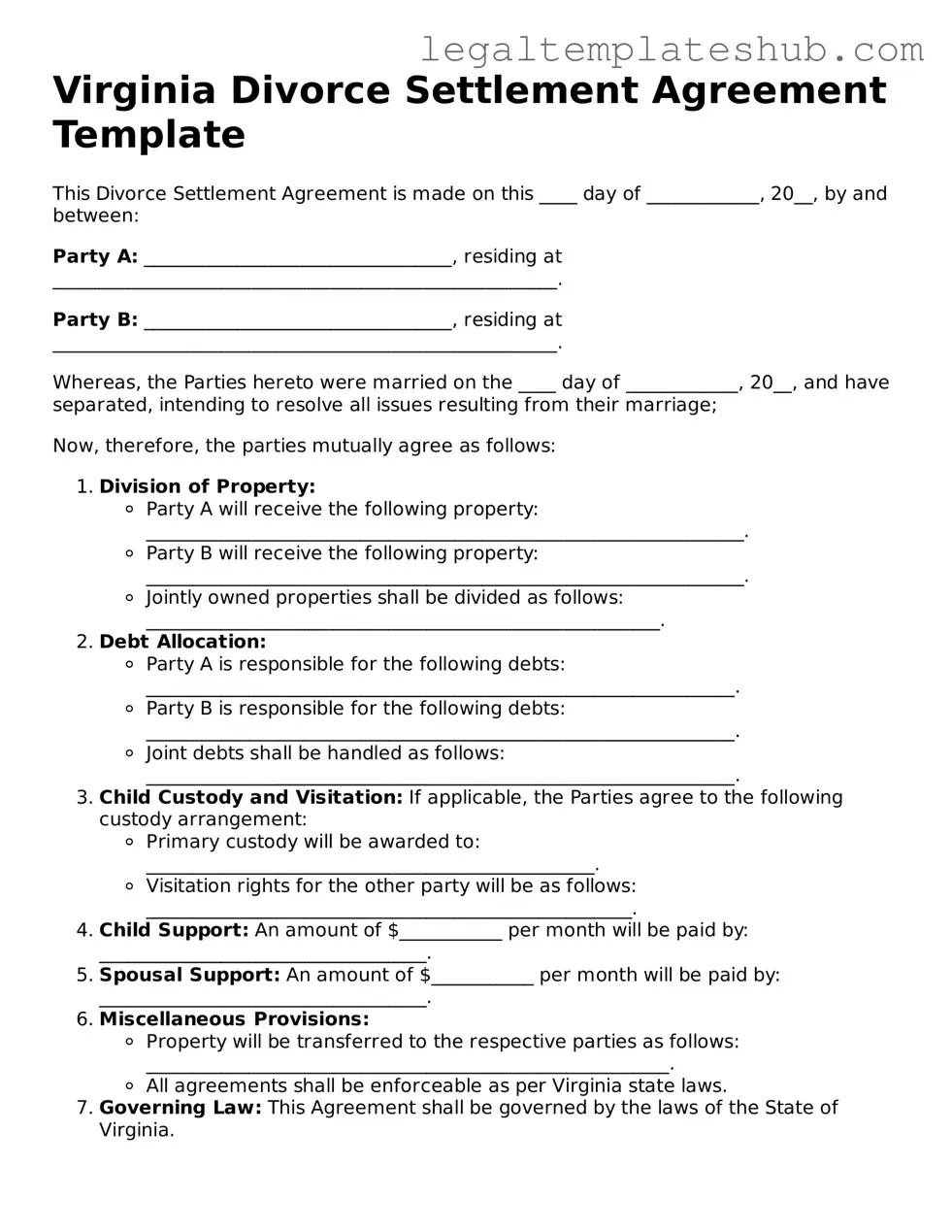Instructions on Filling in Virginia Divorce Settlement Agreement
After gathering the necessary information, you are ready to fill out the Virginia Divorce Settlement Agreement form. This document will help outline the terms of your divorce, including asset division, child custody, and support arrangements. Follow these steps carefully to ensure everything is completed correctly.
- Begin by entering your full name and your spouse's full name at the top of the form.
- Provide your current address and your spouse's current address. Make sure both addresses are accurate.
- Fill in the date of your marriage and the date of separation.
- List all marital assets and debts. Include details such as property, bank accounts, and any loans.
- Clearly state how you want to divide the assets and debts. Be specific about who gets what.
- If you have children, include their names and birthdates. Specify custody arrangements and visitation schedules.
- Outline any child support or spousal support agreements. State the amount and frequency of payments.
- Review the completed form for accuracy. Ensure all information is correct and complete.
- Sign and date the form. Your spouse should also sign and date it if they agree to the terms.
Once you have filled out the form, you may need to file it with the court as part of your divorce proceedings. Make sure to keep copies for your records.
